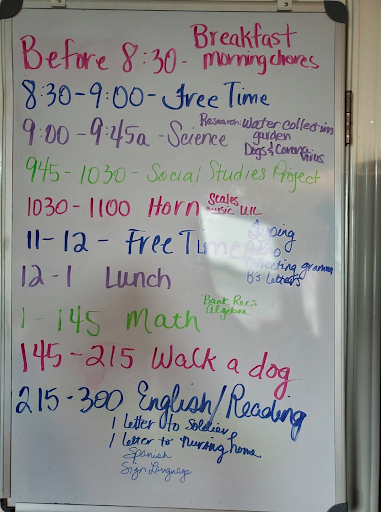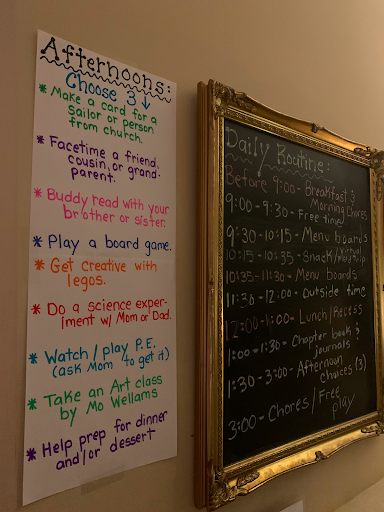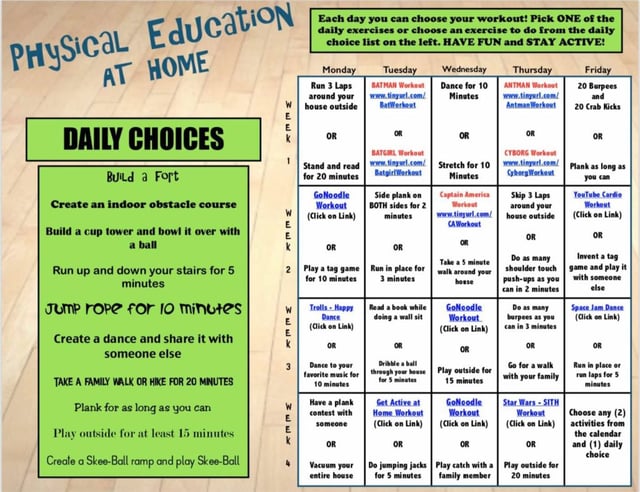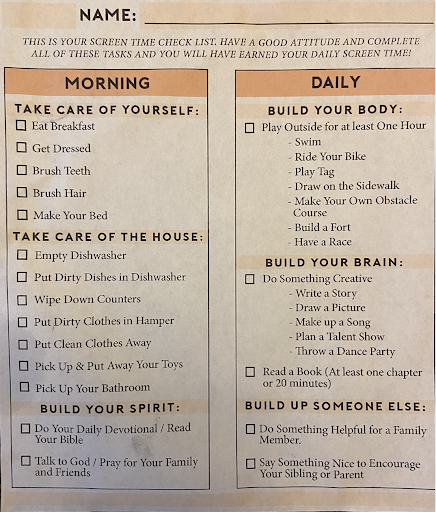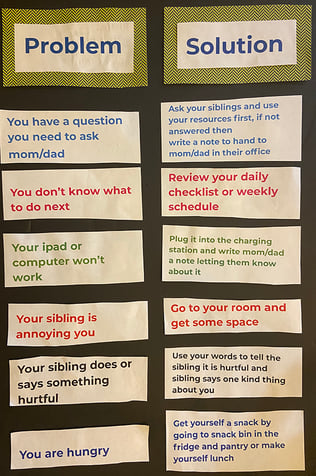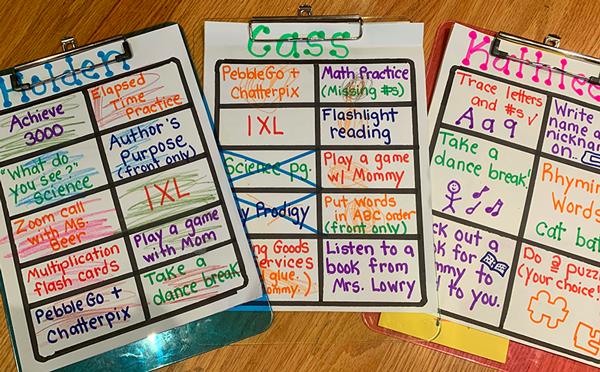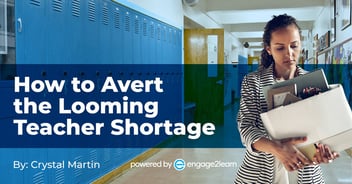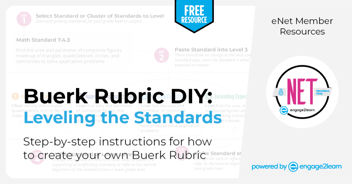The Parent Toolkit for School Closures | engage2learn
This Parent Toolkit is also available in Spanish.
The unprecedented events caused by COVID-19 have launched many parents throughout the country into truly uncharted territory. Nearly overnight, you all have become educators! We understand the thought of managing a homeschool environment for most is a daunting task, even as local districts are providing excellent resources. Our hope for this resource is to simply help parents focus their attention on the specific area of concern that is most important to them in the moment.
engage2learn (e2L) is a company of educators that has been supporting school districts since 2011 and, for that entire time, has operated as a virtual company. Because we are completely virtual and all have families, we have a lot of personal experience managing work from home along with our own kiddos, especially during the summer months and holiday breaks! The team who built this resource is comprised of the best of the best and has taken great care in providing the most actionable information to help you, individually, provide the best possible environment for your own kids. We know you’ll find this useful. There are three distinct sections of this resource, each with three problems or challenges that you may be experiencing or with which you identify. Along with each of the identified problems, we’ve provided a bulleted list of suggestions and resources. Please feel free to drop additional questions you may have about challenges you are facing in the comments section of this blog post, and we will do our best to address your concerns in a timely fashion.
Addressing Your Children’s Social and Emotional Needs
My kids are asking a lot of questions about COVID-19. How do I talk to them about what is happening, when everything is changing so quickly?
Solution:
- Psychology Today offers 7 simple tips for talking with your children about COVID-19. At the top of their list? Ensure that your own needs are being met so that you can best care for your child. Our students will follow our lead when handling this (and any) crisis.
- Keep your language age-appropriate, and be honest with your children about what is happening while offering reassurance to ease their anxiety and fears. Amanda McGuiness, the Autism Educator, has created a kid-friendly, social narrative to explain COVID-19 to young learners: What is the Coronavirus?
- If your children are especially young and unaware of the COVID-19 pandemic, you may choose to focus on simple hygiene, such as handwashing or covering coughs and sneezes in their elbow, rather than raising new fears. Make it fun with a video or dance. There is no shortage of ideas online!
- Maintain their rituals and routines when possible. As you navigate schooling and working from home, it is important to keep children’s normal, at-home schedules intact, especially at bedtime! Explain to your child that you will be figuring out a new family routine for the other times of the day.
- Follow the advice of Mr. Rogers: “When I was a boy and would see scary things in the news, my mother would say to me, ‘Look for the helpers. You will always find people who are helping.’”
- Lastly, lean on the advice of pediatric experts, who are working tirelessly to provide resources and support: UNICEF has an excellent, easy-to-follow plan for comforting your children during this difficult time.
My kids are getting cabin fever. What are some things we can do outdoors that are still educational and maintain social distancing?
Solution:
- Ditch the electronics, and think back to your own childhood: What sorts of activities did you enjoy doing outdoors? Go for a family walk or bike ride; encourage your students to run a lap around your home or apartment building; create an obstacle course…just get them moving!
- Become one with nature! Much research details the benefits of grounding, or touching the earth with your bare feet or hands, which is proven to boost mental health–something we could all use during these long days. Look no further than THIS NATURE GUIDE to come up with simple activities for kids that require nothing more than what you find outside your doorstep.
- Bring the outdoors in. That is, channel their outdoor reprieve into an enrichment activity, such as drawing or journaling. What shapes did you see in the clouds? What signs of Spring are sprouting around us? Giving students a purpose while they are out-and-about only adds to their brain development and will also relieve some stressors for you both!
My kids are getting stressed and I’m worried about their mental health. How can I help manage their stress and anxiety to ensure they maintain their mental health?
Solution:
- You can help your child continue to foster relationships with friends through various means, such as using Facetime, scheduling a virtual chit chat through Google Hangout Meetings, regular phone calls and text messages with family and friends, or simply writing a letter and mailing it. This resource, 4 Easy Ways to Host a Virtual Playdate, also provides fun ways for your child to have a virtual playdate!
- Provide ways for your children to maintain healthy bodies by doing some form of physical activity each day, getting plenty of sleep, and eating a well-balanced diet. When following social distancing, your child may experience feelings of sadness or depression. Physical activity is scientifically proven to combat those feelings, so finding ways to exercise is important! Physical activity can be fun and done together as a family, as seen on 10 Fun, Fresh Ways to Work Out Together as a Family. With Spring officially here, try one of these tips of having a dance party, doing yoga together, letting the kids design the activity, or hitting the trail together!
- Stay informed, talk to your children about what is happening, and ensure them that you are keeping them safe. Check out the tips on Helping Children Cope during Emergencies, and see additional suggestions for talking with your children about COVID-19 above.
- Remember that you and your child’s mental health and relationships are more important than sticking to a schedule or finishing all of their academic work. You can find these tips and more at the Managing Anxiety and Stress by the Center for Disease Control and Prevention (CDC), Taking Care of Your Behavioral Health by the Substance Abuse and Mental Health Services Administration (SAMHSA), and Protect Your Family’s Mental Health During the COVID-19 Pandemic by U.S. News.
Making Remote-Learning Work for Your Family’s Schedule
I don’t know how to structure the day when I am at home. How do I organize the time?
Solution:
- Here are both a daily template schedule and a weekly template schedule that you can use for your family! Tweak it to fit your children’s needs, and remember to give yourself a break if you don’t adhere to it every minute of the day. Making a schedule ensures that you have a plan for the day. Utilize it as a guide to help you be intentional and strategic concerning your child’s learning.
- What goals does your child have for him/herself? Let them take ownership and autonomy of their learning–how powerful! Plan books, activities, and internet resources around those goals.
- For instance, if your child’s goal is to continue developing his/her reading skills, then design his/her schedule to include time for reading in different ways: read to himself, listen to a book on Audible (currently FREE for students), FaceTime his Mimi to read her a book or to have her read a book to him, read a book to his brother, or play a reading game on the computer or tablet. When you start with your child’s goals in mind, you ensure his/her day is purposeful, fun, and educational.
- You can use this Student Goal-Setting template or a similar one to help your child set his/her own goals!
- Build in movement. Have your children go outside to play or do an activity. Set up some centers for them to transition through. If they just finished playing a game or learning activity on a device, think about putting a large motor movement activity in your schedule following that. For ideas, see below:
- Use painter’s or washi tape to make some targets on the floor and have them try to throw a bean bag and land it on the target.
- Go for a nature scavenger hunt together on a walk through the neighborhood by putting items found in a sack or taking pictures of objects.
- Have PE by turning on a kids’ workout on YouTube.
- Here are some additional daily activities to get you started!
- Don’t reinvent the wheel! Use Pinterest, websites, emails from teachers, advice from friends and family, and blogs like this to get great ideas of things to put into your schedule. As we like to say at engage2learn, we are all #bettertogether.
- Take inventory of the things you already have in your house, and implement those things into your schedule. Taking a look at your children’s toys is a great way to build station rotations. For example, I saw that my boys have books, marble tower pieces, train tracks, and Legos. I could place those in four corners of my living room and set a timer for 15 minutes. Then, my boys could rotate through the stations every time the timer goes off.
- Social skill development is still a priority during this time and should not be neglected. Coordinate with the parents of your child’s friends and have virtual playdates. Ideas for playdates: work on an assignment together, play a board game together, play show and tell with their favorite toys, take turns telling a made-up story or reading to each other, etc. Here are more fun virtual playdate ideas! Your child will enjoy seeing his or her peers, being comforted by seeing that they are all facing the same situation together, while you’ve just filled another valuable time block on the stellar schedule you have created. Win-win!
I still have to go into work and am not home to teach or help my kids during the day. What options do I have?
Solution:
- Time blocking vs. all-day scheduling. Choose specific times of day that work for your family, even if it is in the morning or evening per your normal schedule.
- Reduce the amount of time your children are doing actual academic work. For example, Monday may be math, reading, and PE, which may only take two hours. You can structure math for 40 minutes, reading for 40 minutes, and PE for 40 minutes. Utilize the resources your teacher has provided for these subjects.
- Post a checklist, like the one seen below or create your own checklist like the one linked here, every day, to help your children know all of their work for the day, even if you aren’t home.
- You can engage your kids in creating their own to-do list every day to guide their daily activities as well. Here is an example of a daily to-do lists based on student goals.
I don’t have internet access or a device at home. How can I structure my day without these resources?
Solution:
- No technology? No problem! There are SO many ways to educate your child without a device or the internet. For starters, have your child write a story about a topic of his/her interest or about a book he/she read. Or, conduct a science experiment with materials you already have on hand. For ideas on science experiments and much more, see 21 Ways to Entertain and Educate Children without Technology.
- Get creative! There are countless inside and outside activities that are technology-free. Some of my favorite outside activities are going on a nature hike, engaging in a scavenger hunt, or playing in the backyard. There are just as many fun indoor activities such as cooking together, creating chalk art, or building an obstacle course. For more ideas on creative ways to engage your kids without technology, you can view 24 Screen Free Activities for Kids. We have also included more tips below.
- Play games! Use board games, cards, and family games to engage your kids in using some of the e2L Life Ready Skills of collaboration, communication, creativity, and critical thinking. You can find various family games on Learning Unplugged Family Fun Activities.
I am being pulled in so many directions right now, I can’t juggle it all. What are age-appropriate ways to have my kids manage some of their own learning and schedule?
Solution:
Even pre-school learners can take some responsibility for their own learning if they have a process to follow. Try using some of the following tools and processes to help your kids learn the valuable skill of managing their own time and learning.
- Set goals! When we have a million things to do, it can feel overwhelming to even think about getting it all done…even as adults. Let’s break it down into chunks so it doesn’t feel so insurmountable. Consider a few goals you want to accomplish for the week or even one goal per day to keep it simple, and then create to-do lists to help you achieve the goals. This helps to model for kids how they, too, can set goals and create to-do lists to stay on track.
- Try using this Student Goal-Setting tool to help kids plan out their goals and to-do lists, and you can even use them for yourself!
- Create Know/Need to Know Lists. Helping kids identify what they already know about something and what they still have questions about helps them prioritize their time. It also allows them to seek out resources to find the answers instead of resorting to asking questions over and over, thinking that parents are the keepers of all information.
- Use playlists to give kids a roadmap for their learning. The playlists provide kids with independent activities to be done in a specific order. Playlists can involve choices to provide students with a variety of ways to personalize their learning. Consider this resource that has examples of multiple content area playlists!
- As mentioned in the student goal setting solution above, daily to-do lists are a great way to narrow down the “must-dos” for the day and can help your kids practice autonomy. It can even help carve out some much needed time for yourself.
- Are you wondering how you help even your youngest learner grow in Life Ready Skills? Check out this Life Ready Skills Tracking for Young Learners that can help parents understand the Life Ready Skills and be able to share them in a comprehensible way with their kids. While they are designed for the littles, they can also be an ice-breaker with the bigs! You can even use an Autonomy Anchor Chart like the example below to post for your children to have resources on how to be autonomous learners while you are working. Utilize this template or another one to create your own autonomy chart.
- Progress Checks. Just as we want our kids to set goals and create to-do lists to be successful, it is also important to remember that even the most autonomous adult needs some accountability. Progress checks are quick check-ins with your kids to ensure that they are on track throughout the day. It can be as simple as before your morning snack, you need to get through ¼ of your math playlist, as an example. You can even have them write down the time on their to-do lists so that they remember.
Transitioning from Parent to Teacher…But How?
I don’t have an education background. How can I help my children with their academic needs?
Solution:
- Reach out to your child’s teacher(s) for suggestions and areas of focus. Many districts are providing hard copies of assignments, while others have provided online resources. Choose 1-2 options–or a combination of both–just to get your child started on his or her work. Start small and add content as you and your child are ready.
- Ask your child, “What strategies have you used in your classroom for this?” to get the ball rolling!
- Try incorporating Need to Knows (n2Ks) or a KWL Chart, depending on the age of your child. Ask him or her, “What do you need to know in order to complete this assignment,” or have your student fill out “What I know / What I want to know / What I have learned” at the start of each day or week for a specific content area.
- Use your home learning environment for children to learn about new things. Show your children how to apply their knowledge of what they’ve already learned in school to their everyday environment. For ideas, see Education Activities for Kids.
- Choice boards and choice menus are a great way to provide activities for your child that allows him/her to pick activities to work on that they have already mastered. Choice boards provide students the opportunity to not only have choices, but to also be engaged in activities of their interest. You can use choice boards that have already been created like the ones in the pictures below or create your own using this template.
- Utilize a free online academic resource such as Khan Academy, that provides math tutorials, practice questions, and a summative test for each unit of study. Your child can work at his/her own pace to learn the content and show mastery of the skills.
My kids are all different ages and abilities. How do I manage their work and ensure they’re each getting what they need academically?
Solution:
- Start by organizing their assignments individually. What are 3-5 learning goals for each of your children? Then, consider having each child make his or her own To-Do list to reach those goals. If your children are young, menu boards with icons are great tools to build autonomy and make your life a bit easier!
- Time-blocking and student-driven activities are your friends! Carve out a small chunk of time to work with your child individually, while the others are occupied with independent, autonomous activities such as puzzles, Legos, drawing, or easy-to-follow apps.
- Designate specific days of the week for content focus. For instance, turn Monday into “Math Monday,” and plan to work with each of your children on his or her math curriculum at some point throughout the day. Keep it simple, and give yourself some grace: 15 minutes with each for individualized, direct instruction is a good place to start!
- Ask your older child to create activities and lessons for the younger child/children. Allow them to be the “teacher.” They can do things like read a book to a younger sibling and ask questions for understanding. They could do a number scavenger hunt by hiding numbers around the house and have their younger sibling find the numbers then solve various math problems with the numbers they found. What a great way to reinforce what older children know while teaching younger children something new!
- Simplifying is the key!!! Create a schedule that has all of your children doing the same academic content at the same time; just have different outcomes that are appropriate for their age and ability. This way, you aren’t spending a lot of time trying to plan and keep track of different schedules. For example, they can watch a virtual field trip, and then create a way to share what they learned (paint it, draw it, create a mobile, create a model, etc.). While your older child reads a book, you can use an app like Libby to borrow and read a book to a younger child.
- Have your older child(ren) working on something while the younger one is occupied by taking a Go Noodle break!
- This unprecedented time is challenging for all parents, but those whose children have special needs may be feeling especially overwhelmed without the routine of school and the supportive team(s) of teachers, counselors, and therapists. In those instances, try out these digital resources, Apps for Students with Special Needs, and refer to the empathetic advice of Special Needs Parenting in the Age of Pandemic.
There are so many free resources. How do I know where to start?
Solution:
- While resources are meant to be helpful, sometimes they can be overwhelming! We tried to hone in on the most valuable free resources available that have been tested by our children and loved by parents that we know and trust. Asking friends, family, and teachers you know can be a great place to start, beyond our list here.
- Do you have a math lover? Does your child need a little extra math practice? Prodigy can be the tool for you! Prodigy easily motivates students grades 1-8 to learn and practice math.
- Having an “ah-ha” moment can feel so good! That BrainPop when a student suddenly understands, is influential! This resource uses innovative tools to help students have endless opportunities to have these “ah-ha” or “BrainPop” moments! Take advantage of the wealth of learning materials spanning the subjects of: Science, Health, Reading and Writing, Social Studies, Math, as well as Arts and Technology.
- Gaming is a huge part of our children’s culture! Games are a great way for students to learn and have fun at the same time. ABCya! does a great job creating entertaining games that allow students to learn, addressing multiple content areas and skills for grades PK-6th+.
- It has been proven that reading to children is very important. However, it is not always possible to read to our children as much as we would like. Storyline and Audible are great resources to fill in those gaps when we aren’t available to read to our kids. For older student listeners, Audible currently has free kids books to hear, due to school closures. Our younger kiddos will love Storyline, and you will, too! Let me tell you why. Storyline is free, the books are read by many famous actors, the pictures of the books are shown as visuals, and there are activities that parents can print off for each book for students to complete. Take a look for yourself, and you won’t be disappointed.
- Remember to have scheduled breaks away from technology even when it is educational. Depending on the age of your kids, set a timer and talk about ways they can move or hydrate during that quick break.
Remember, we are #BetterTogether!
We hope that you have found some helpful tips in this toolkit! We know it is overwhelming, but we also believe this is a great opportunity to gain so much! This is a chance for us all to better understand our kids, what they are learning, and how they go about doing that. This will allow us to dig in and participate in a way that we do not typically get to do! We believe in you and know that, just like everything else you do, you’re going to do a great job! There is so much information floating around out there, so we want to end with a reminder of encouragement to you all. Here are a few thoughts, many that have been shared in various forms on social media, to keep in mind that are so very important.
- This too, shall pass. Our kids are feeling the stress of all the unknowns, just like the adults. They likely don’t have the capacity to articulate those feelings, so let’s all use this important time together to encourage and comfort our precious children. Don’t worry about academic progress or falling behind; instead, love them and assure them that it will be okay. Remind them that all children, all across the country, are in the exact same situation, love them, and assure them it will all be okay.
- Teachers are experts at helping students, so when this is all over, and everyone goes back to school, they will be able to fill in the blanks if there are any, love them and assure them that it will all be okay. Don’t put undue pressure on them, don’t get discouraged and angry if things don’t go smoothly at first, don’t make things so heavy that the weight of this situation becomes unbearable, love them, and assure them it will all be okay.
- This is THE time to pour love, patience, kindness, and gentleness into each and every day, and each and every interaction with one another. We can come out stronger in so many ways if we make our mental health a priority and remember to love them and assure them it will all be okay.
- Take care of yourself as well. Be safe, and be kind to all. Remember, we love you, and it will all be okay.

